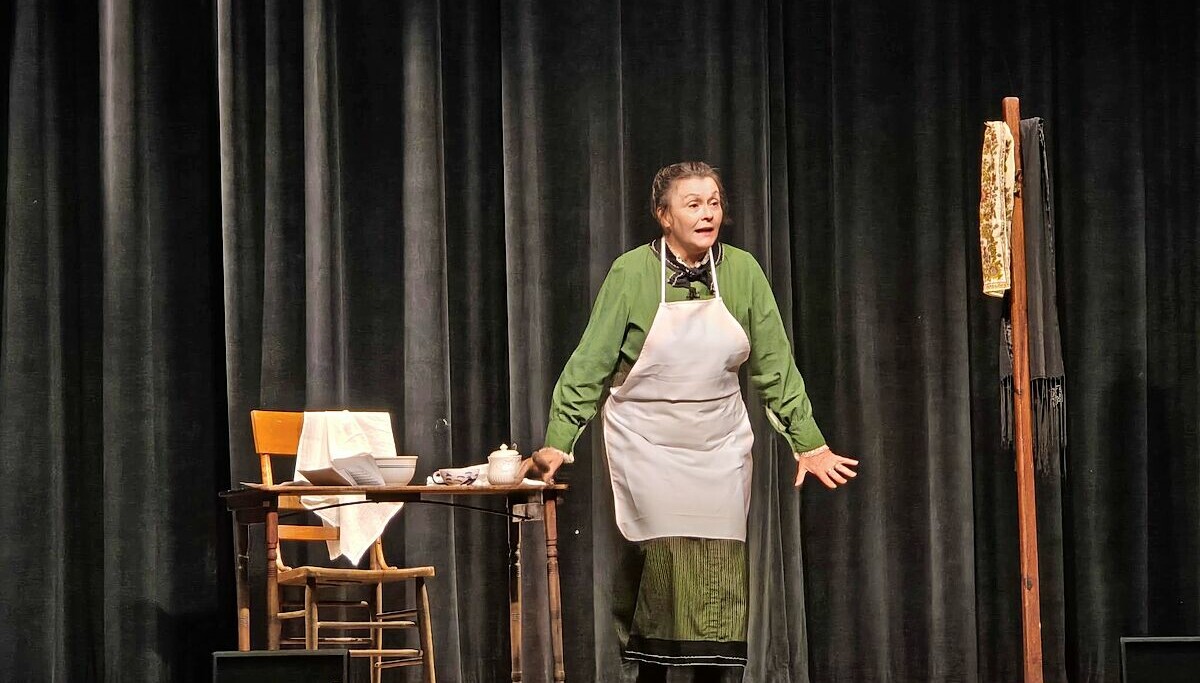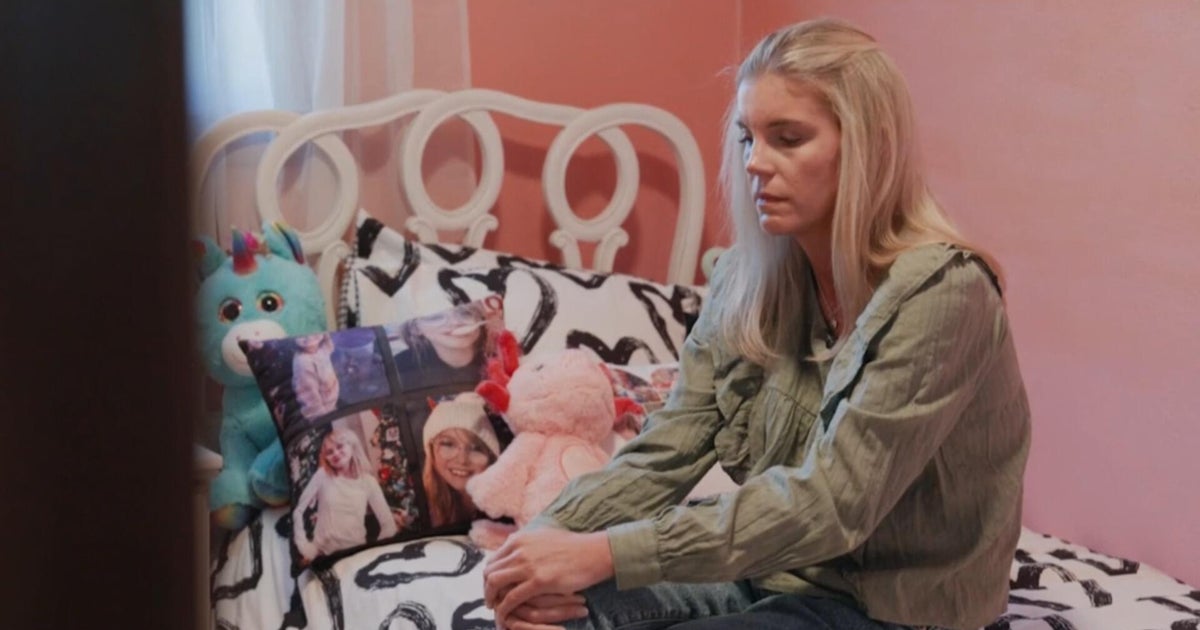Report on Madcap Living History Night: The Case of Mary Mallon and its Relevance to Sustainable Development Goals
Executive Summary
On October 16, a Madcap Living History Night event was held at the Woodward Opera House in Mount Vernon, featuring a performance by Tammy Rae Souhrada as “Typhoid Mary” Mallon. The event served as a significant cultural and educational platform, directly engaging with several United Nations Sustainable Development Goals (SDGs), particularly in the areas of public health, education, and justice.
Analysis of the Event in the Context of SDGs
SDG 3: Good Health and Well-being
The performance provided a historical case study directly related to ensuring healthy lives and promoting well-being. The narrative of Mary Mallon, the first identified asymptomatic carrier of typhoid in the United States, highlighted critical public health issues that remain relevant today.
- Disease Transmission and Prevention: The performer’s symbolic act of offering berries to the audience illustrated the ease of pathogen transmission, reinforcing the importance of hygiene and public health awareness.
- Epidemiological Investigation: The story detailed the investigation that identified Mallon as the source of multiple typhoid outbreaks between 1900 and 1907, underscoring the foundational principles of epidemiology in controlling communicable diseases.
- Public Health Interventions: Mallon’s two periods of forced quarantine and the medical research conducted on her person (including sample collection and experimental drug trials) provided a stark examination of historical public health measures and their impact on individuals.
SDG 4: Quality Education and SDG 11: Sustainable Cities and Communities
The event functioned as an innovative educational tool, promoting inclusive and equitable quality education while fostering a sustainable and culturally rich community.
- Accessible Historical Education: By presenting historical events through a first-person, immersive performance, the program made complex topics in medical history and ethics accessible to a general audience.
- Community Engagement and Dialogue: A post-performance Q&A session facilitated public discourse on disease transmission, individual responsibility, and public health policy, contributing to lifelong learning opportunities for all.
- Cultural Heritage and Local Partnerships: Staging the event in the historic Woodward Opera House supports the safeguarding of cultural heritage (SDG 11). The program’s success, reliant on sponsorships from local businesses and community groups like the Mount Vernon Players, exemplifies strong community partnerships.
SDG 16: Peace, Justice and Strong Institutions
The narrative of Mary Mallon’s life raised profound questions about justice, individual rights, and the role of public institutions, which are central to SDG 16.
- Individual Liberty vs. Public Safety: Mallon’s lifelong confinement on North Brother Island after violating the terms of her initial release presents a classic ethical dilemma, prompting reflection on the balance between personal freedom and the state’s responsibility to protect public health.
- Ethical Treatment and Consent: The performance detailed the indignities Mallon experienced during her quarantine, including invasive medical procedures and pressure to undergo surgery, which she refused. Her perspective of feeling persecuted highlights the importance of ethical standards and informed consent within public health and medical institutions.
- Historical Context for Modern Policy: Understanding Mallon’s case provides a historical foundation for contemporary debates surrounding public health mandates and the legal frameworks that govern them.
Program and Performer Details
Performer and Series Information
The portrayal of Mary Mallon was delivered by Tammy Rae Souhrada, a Mount Vernon resident, educator, and experienced Chautauqua performer. Her extensive research and first-person delivery provided a nuanced perspective on the historical figure. The Madcap Living History Night series continues to contribute to the community’s cultural and educational landscape, with the next event scheduled for November 20, featuring a portrayal of President Theodore Roosevelt.
Analysis of the Article in Relation to Sustainable Development Goals
1. Which SDGs are addressed or connected to the issues highlighted in the article?
-
SDG 3: Good Health and Well-being
The article’s central theme is the story of “Typhoid Mary” Mallon, which is a historical case study in public health. It directly addresses issues of communicable disease (typhoid fever), disease transmission, the concept of asymptomatic carriers, and public health responses like quarantine and research. The narrative highlights the “profound public health crisis” Mary Mallon represented, making SDG 3 the most relevant goal.
-
SDG 4: Quality Education
The event described, “Madcap Living History Night,” is an educational initiative. The article explains that the performance and subsequent Q&A session serve to educate the audience about “Mary Mallon’s life, public health history, and the challenges of portraying historical figures.” By using performance art to engage the community with history and science, the event contributes to lifelong learning opportunities and promotes knowledge about public health, aligning with the aims of SDG 4.
-
SDG 11: Sustainable Cities and Communities
The article portrays a community-level cultural event held at a “historic venue,” the Woodward Opera House. The “Madcap Living History Night series” is presented as a local initiative that offers “Mount Vernon audiences a unique way to engage with the past.” This effort to safeguard and promote local cultural heritage through performance art connects to the goal of making communities inclusive, safe, resilient, and sustainable.
-
SDG 17: Partnerships for the Goals
The article explicitly mentions that the event was made possible through community support and partnerships. It states that the program was “sponsored by Bickerdyke Table & Tap, Great Impressions, Mount Vernon Players, and the Woodward Opera House.” This collaboration between local businesses and cultural organizations exemplifies the multi-stakeholder partnerships that are crucial for achieving sustainable development goals.
2. What specific targets under those SDGs can be identified based on the article’s content?
-
Under SDG 3: Good Health and Well-being
-
Target 3.3: End epidemics of communicable diseases
The entire story of Mary Mallon revolves around the effort to understand and control an outbreak of typhoid fever, a communicable disease. The article details how she was identified as a carrier who caused “multiple outbreaks,” which directly relates to the goal of combating and ending such diseases.
-
Target 3.d: Strengthen capacity for early warning and management of health risks
The investigation that identified Mary Mallon as the “first known asymptomatic carrier of the typhoid bacterium in the United States” is a historical example of epidemiological investigation, which is a core component of early warning and risk management for health crises. The article’s mention of the story’s “continuing relevance… in light of modern conversations about disease transmission” reinforces this connection.
-
-
Under SDG 4: Quality Education
-
Target 4.7: Ensure all learners acquire knowledge and skills to promote sustainable development
The Living History performance and Q&A session are forms of non-formal education that provide the audience with knowledge about public health history and global health issues (“disease transmission”). This use of a cultural performance to foster understanding of scientific and social issues contributes to promoting global citizenship and an appreciation of culture’s role in education.
-
-
Under SDG 11: Sustainable Cities and Communities
-
Target 11.4: Strengthen efforts to protect and safeguard cultural heritage
The “Madcap Living History Night” is a cultural event that brings history to life for the community. By presenting historical narratives in an engaging format, the series helps safeguard and promote the community’s connection to its past, which is a form of protecting cultural heritage.
-
-
Under SDG 17: Partnerships for the Goals
-
Target 17.17: Encourage and promote effective public, public-private and civil society partnerships
The article’s specific mention of sponsors (“Bickerdyke Table & Tap, Great Impressions, Mount Vernon Players, and the Woodward Opera House”) provides a clear example of a civil society and private sector partnership. These local entities collaborated to support a cultural and educational event, demonstrating the kind of partnership this target aims to foster.
-
3. Are there any indicators mentioned or implied in the article that can be used to measure progress towards the identified targets?
-
Indicators for SDG 3 Targets
-
Implied Indicator for Target 3.3:
The article implies the measurement of disease incidence by referring to “multiple outbreaks of typhoid fever” caused by Mary Mallon. This points toward Indicator 3.3.2: Tuberculosis, malaria and neglected tropical diseases incidence per 1,000 population, as typhoid is a communicable (and sometimes neglected) disease whose control is measured by tracking its incidence.
-
Implied Indicator for Target 3.d:
The historical narrative of identifying an asymptomatic carrier and the modern relevance to disease transmission points to the importance of national public health capacity. This relates to Indicator 3.d.1: International Health Regulations (IHR) capacity and health emergency preparedness. The story serves as a lesson in the importance of having robust systems for disease surveillance and response.
-
-
Indicator for SDG 4 Target
-
Implied Indicator for Target 4.7:
The article describes a specific educational program (“Madcap Living History Night”) aimed at the general public. The existence and implementation of such programs are a measure of progress. This relates to Indicator 4.7.1: Extent to which (i) global citizenship education and (ii) education for sustainable development are mainstreamed in national education policies, curricula, teacher education and student assessment, specifically through non-formal community education.
-
-
Indicator for SDG 11 Target
-
Implied Indicator for Target 11.4:
The article mentions that the event was sponsored by several local businesses and organizations. This sponsorship represents a financial investment in a cultural heritage event. This directly implies Indicator 11.4.1: Total expenditure (public and private) per capita spent on the preservation, protection and conservation of all cultural and natural heritage, by highlighting the private expenditure component.
-
-
Indicator for SDG 17 Target
-
Implied Indicator for Target 17.17:
The list of sponsors is direct evidence of a partnership between civil society and the private sector. This points to Indicator 17.17.1: Amount of United States dollars committed to (a) public-private partnerships and (b) civil society partnerships. While the article does not state a monetary value, it confirms the existence of such a partnership and the commitment of resources to it.
-
4. Summary Table of SDGs, Targets, and Indicators
| SDGs | Targets | Indicators |
|---|---|---|
| SDG 3: Good Health and Well-being | 3.3: End the epidemics of AIDS, tuberculosis, malaria and neglected tropical diseases and combat hepatitis, water-borne diseases and other communicable diseases. | 3.3.2 (Implied): The article’s focus on “multiple outbreaks of typhoid fever” implies the measurement of the incidence of a communicable, food/water-borne disease. |
| 3.d: Strengthen the capacity of all countries… for early warning, risk reduction and management of national and global health risks. | 3.d.1 (Implied): The story of identifying the “first known asymptomatic carrier” and its relevance to “modern conversations about disease transmission” highlights the importance of public health capacity for surveillance and emergency preparedness. | |
| SDG 4: Quality Education | 4.7: Ensure that all learners acquire the knowledge and skills needed to promote sustainable development… including… global citizenship and appreciation of cultural diversity and of culture’s contribution to sustainable development. | 4.7.1 (Implied): The “Living History Night” and Q&A session are described as educational events for the community, representing a form of non-formal education that promotes knowledge of public health history and global citizenship. |
| SDG 11: Sustainable Cities and Communities | 11.4: Strengthen efforts to protect and safeguard the world’s cultural and natural heritage. | 11.4.1 (Implied): The mention of private sponsorship for a cultural performance series at a historic venue implies private expenditure on the preservation and promotion of cultural heritage. |
| SDG 17: Partnerships for the Goals | 17.17: Encourage and promote effective public, public-private and civil society partnerships… | 17.17.1 (Implied): The article explicitly names the sponsors, demonstrating the existence of a civil society/private partnership and the commitment of resources, even without specifying a dollar amount. |
Source: yourohionews.com







